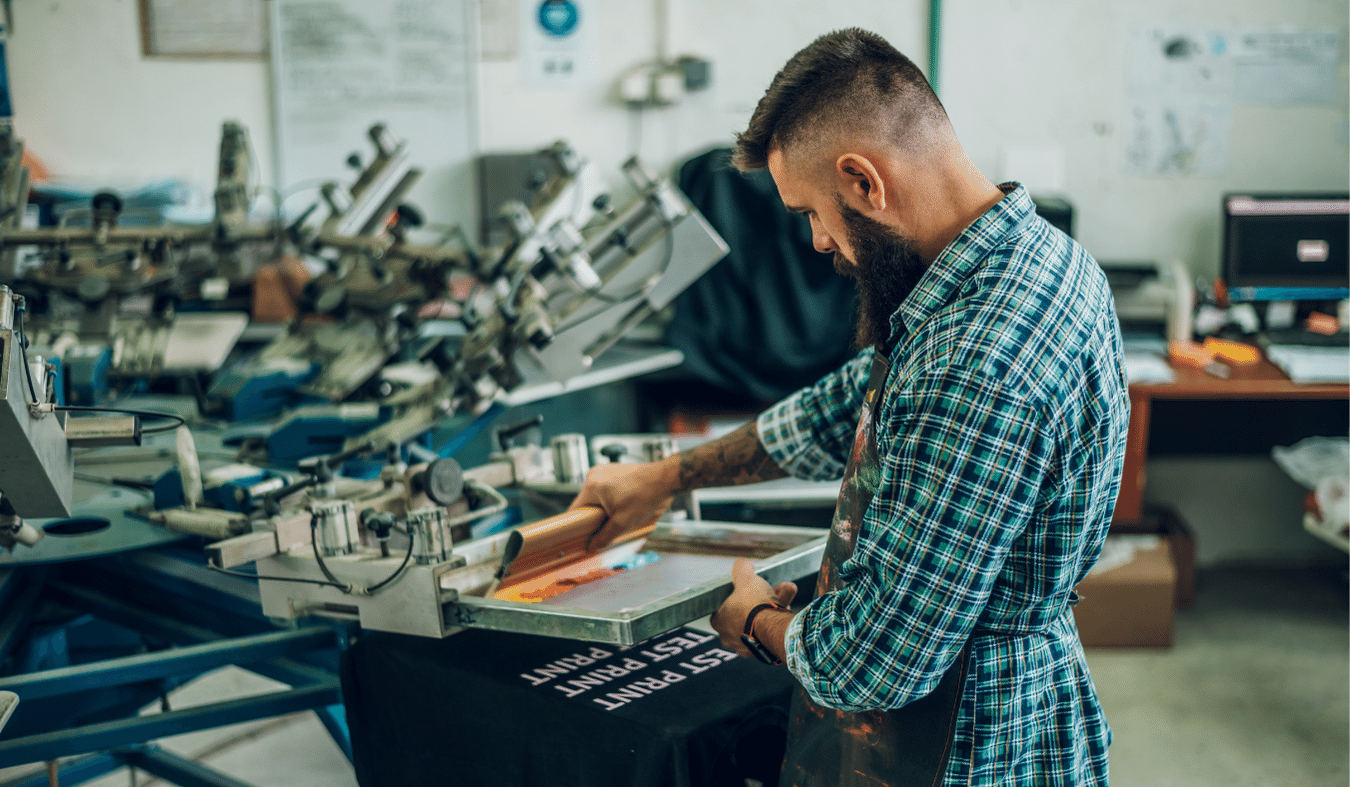If you're trying to decide whether standard stretch and glue or retensionable frames are better for your shop, this article is for you. We will discuss the differences between these types of frames, between different types of stretch and glue frames, and how your mesh and frame choice can affect your overall print.
Mesh
Different mesh counts are used to achieve different effects in screen printing. The higher the mesh count, the tighter the weave. Regardless of the mesh count you use, however, you'll get misalignment during printing if the frame doesn't maintain its tension. For this reason, the type of frame you use is paramount.
What Are Standard Stretch and Glue Frames?
Stretch and glue frames are a standard option for screen printing. As the name implies, the screen mesh is stretched over a wooden or aluminum frame, then glued into place. The most important aspects of a screen printing frame are its durability and its ability to hold tension over time. The quality of the print also depends both on the quality of the frame and the type of mesh used.
Wood Frames vs. Aluminum Frames
Wood frames are typically less expensive than aluminum, making wood a good choice for simple screens that don’t need to stand up to prolonged heavy use. Wooden frames tend to deteriorate over time, however. The ink, water, and chemicals used in removing the stencil and ink from the screen can cause the wood to warp and the frame to become distorted. This can affect not only the longevity of the screen but also the mesh tension and, ultimately, print quality.
Aluminum frames, on the other hand, are often better able to hold tension. They won't quickly wrap, and they're generally lighter and easier to clean. While aluminum frames cost more than wood frames, aluminum is often the more economical choice over the long term.
Whether wood or aluminum, stretch and glue frames are less expensive than retensionable frame designs. This makes them a sound option when you need to make every penny count, like when you’re first starting up a shop.
What Are Retensionable Frames?
Unlike stretch and glue frames, which are static, retensionable frames allow you to reestablish or adjust your mesh tension as needed. Static frames lose their tension over time. Screens tend to lose tension after a screen is used and the emulsion removed. When you have retensionable frames, you can simply loosen the bolts with a wrench and retension the mesh. After several tension adjustments, you will notice that the mesh no longer loses its tension. The mesh will work, so with a bit of attention, you can use the same frame for years. Retensionable frames come in both wood and aluminum.
Which Is Better? Standard Stretch and Glue Frames vs. Retensionable Frames
While retensionable frames have many advantages. Their cost and the time and labor needed to retension them may make them impractical for some shops. If you don’t take the time to retension the frames, they lose their advantage over stretch and glue types. If you don’t have workers available to do this regularly, then it may make more sense to send in your stretch and glue frames to be restretched.
MicroScreen has both standard and custom frame sizes to suit a wide range of needs. We're dedicated to accurate, efficient, high-quality frames that you can count on. Learn more about our services here, or subscribe to our blog for more information about screen printing technology.
